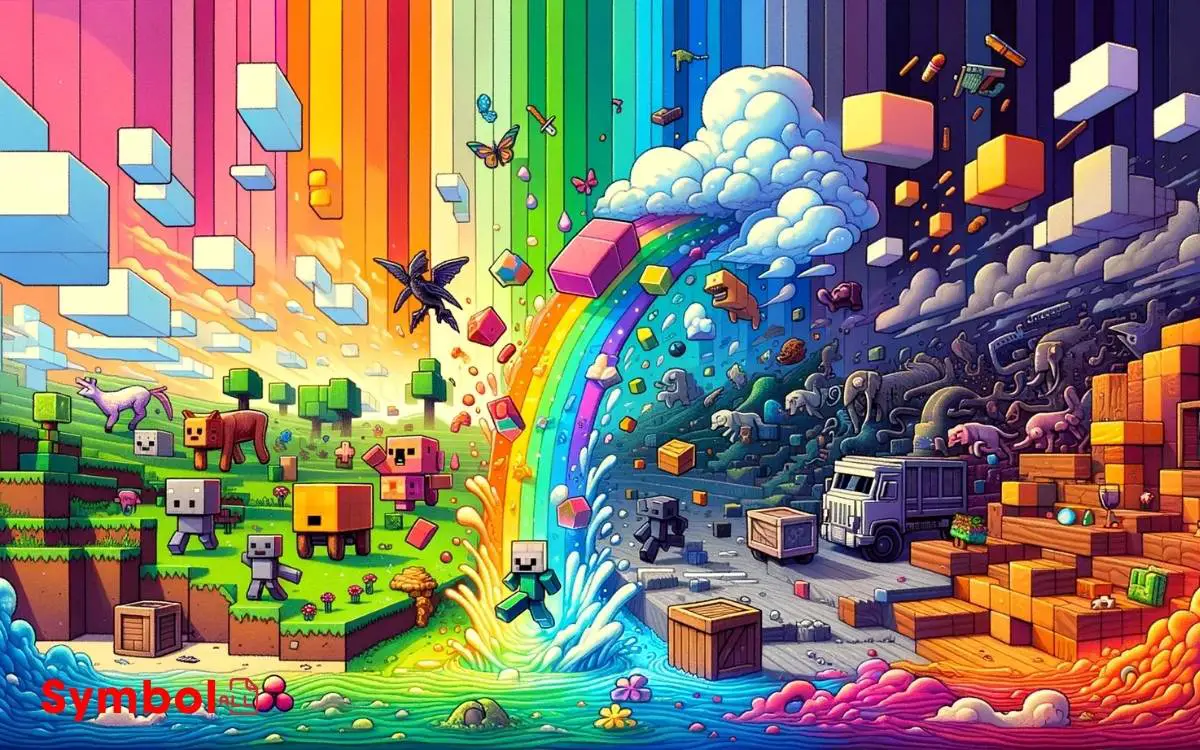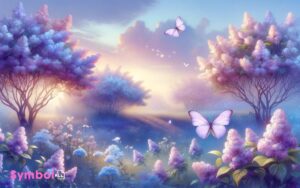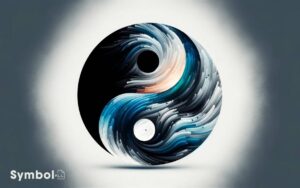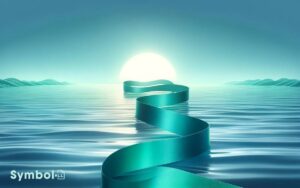Symbol to Change Color in Minecraft: A Complete List!
In Minecraft, you can alter text colors and styles using the ‘§’ symbol followed by a distinct color code.
This customization adds personality and vibrancy to your game elements, from server messages to book texts.
To implement a color change, simply insert this symbol and the corresponding code directly before your text. Remember, each color and style necessitates a separate code, so mixing isn’t possible.
Additionally, access to server commands or creative mode might be required for certain customizations.
Mastering these codes can greatly enhance your gameplay experience, allowing for clearer communication and more aesthetically pleasing creations. With this knowledge, you’re one step closer to mastering Minecraft’s color palette.

Key Takeaway
Minecraft Color Codes for Chat and Text Formatting
| Color | Formatting Code | Motive Chat Code | Hexadecimal |
|---|---|---|---|
| Black | \u00A70 | &0 | #000000 |
| Dark Blue | \u00A71 | &1 | #0000AA |
| Dark Green | \u00A72 | &2 | #00AA00 |
| Dark Aqua | \u00A73 | &3 | #00AAAA |
| Dark Red | \u00A74 | &4 | #AA0000 |
| Dark Purple | \u00A75 | &5 | #AA00AA |
| Gold | \u00A76 | &6 | #FFAA00 |
| Gray | \u00A77 | &7 | #AAAAAA |
| Dark Gray | \u00A78 | &8 | #555555 |
| Blue | \u00A79 | &9 | #5555FF |
| Green | \u00A7a | &a | #55FF55 |
| Aqua | \u00A7b | &b | #55FFFF |
| Red | \u00A7c | &c | #FF5555 |
| Light Purple | \u00A7d | &d | #FF55FF |
| Yellow | \u00A7e | &e | #FFFF55 |
| White | \u00A7f | &f | #FFFFFF |
Understanding Minecraft Colors
In Minecraft, color plays a pivotal role in customization and aesthetics, allowing you to personalize various elements of the game.
You’re not just stuck with the default palette; the game offers a spectrum of colors to make your creations more vibrant and reflective of your style.
Understanding how Minecraft interprets color is vital. It’s not simply about choosing a favorite shade; it’s about knowing how these colors can be manipulated and applied to different materials and items.
This knowledge enhances your ability to design and decorate with intention, elevating your gameplay experience.
Whether you’re building structures, crafting items, or customizing banners, grasping the nuances of Minecraft’s color system empowers you to inject personality and flair into every aspect of your game world.
The Basics of Color Codes
You’ve grasped the essence of Minecraft colors, now it’s important to understand how color codes work. Grasping these codes is the first step to applying them effectively in your game.
Let’s explore how you can transform your Minecraft experience by mastering the basics of these codes.
Understanding Color Codes
To effectively change colors in Minecraft, it’s important to grasp the basics of color codes. Minecraft utilizes a series of alphanumeric codes, prefixed by the § symbol, to alter text colors and styles in-game.
Each color, from black to white, and even formatting options like bold or italic, has its unique code. It’s essential to remember that these codes don’t mix; you’ll need to input a new code for each color or style change you want to apply.
Understanding these codes isn’t just about memorizing combinations; it’s about recognizing the impact of each color and style on your game environment or message clarity.
You’ll find that some colors enhance visibility, while others might be reserved for specific types of information.
Mastery of color codes elevates your Minecraft experience, allowing for creative and functional uses alike.
Applying Codes Effectively
Understanding the fundamentals of color codes is vital; now let’s explore how you can apply them effectively in your Minecraft projects.
Once you’ve mastered the basics, integrating color codes becomes simple. Begin by selecting the appropriate symbol, typically the section sign (§), followed by a code that represents your desired color.
This combination can significantly transform the appearance of text in signs, chat, or server messages. It’s important to guarantee the code directly precedes the text you wish to colorize; any space or character in between disrupts the effect.
Experimentation plays a key role; try various combinations to achieve the perfect aesthetic. Remember, clarity in your color choices enhances readability and overall impact, making your creations not just visually appealing but also functionally effective.
Accessing the Color Menu
To access the color menu in Minecraft, you’ll first need to open the color interface. Once inside, you can navigate through the color options to find the exact shade you’re looking for.
Opening the Color Interface
Accessing the color menu in Minecraft requires moving through the game’s interface options. This step is important for customizing symbols or text appearances in your game.
You’ll navigate to the specific item or block settings where this option exists. Remember, the path may vary slightly depending on what you’re trying to change.
| Action | Location | Result |
|---|---|---|
| Right-click | Item/Block | Opens menu |
| Select | ‘Color Options’ | Accesses colors |
| Scroll | Through colors | Previews changes |
| Confirm | Selection | Applies color |
This process is straightforward but requires attention to detail. Each action leads seamlessly to the next, ensuring you’re never lost in the myriad of Minecraft’s menus. Now, with the interface open, you’re ready to explore the spectrum of available colors.
Navigating Color Options
Once you’ve opened the color interface in Minecraft, you’ll find a variety of options to customize your symbols or text to your liking.
This menu is your gateway to expressing creativity and personalizing your Minecraft experience. It’s important to understand the layout and functionality of this interface to efficiently navigate through your choices.
The interface includes a spectrum of color options, each represented visually to aid in your selection process. The interface’s intuitive design ensures that users can easily differentiate and choose from the wide array of hues available. For added clarity, each option is accompanied by detailed labels, including specific genetic annotations such as the recessive allele symbol for pod color, allowing for precise customization or analysis. This thoughtful integration bridges functionality with aesthetics, catering to both practical and scientific needs.
You won’t be picking colors blindly; instead, you’ll see a preview of how each choice affects your symbol or text. This immediate feedback is invaluable for making informed decisions about your design.
Remember, this stage is all about exploring the possibilities within the color menu, setting the stage for the precise selection of your desired hue in subsequent steps.
Selecting Your Desired Hue
Diving into the color menu, you’ll immediately notice the wide array of hues available for customizing your Minecraft creations.
This diversity allows for precise personalization, ensuring that every detail aligns with your vision. To assist in your selection, here’s a breakdown:
| Color Name | Hex Code | Minecraft Code |
|---|---|---|
| Red | #FF0000 | §c |
| Green | #00FF00 | §a |
| Blue | #0000FF | §9 |
| Yellow | #FFFF00 | §e |
| Purple | #A020F0 | §5 |
Understanding the hex codes and corresponding Minecraft codes is essential for applying the exact shade you desire. It’s about finding the perfect balance between aesthetic appeal and the limitations of the game’s color spectrum.
Using Section Signs for Colors
In Minecraft, you’ll use section signs (§) followed by a code to change text colors in various in-game elements. This method requires understanding the specific color codes Minecraft recognizes.
Each color and formatting option has a designated code – a key letter or digit that you append directly after the section sign without any spaces.
For instance, §c changes the text to a vivid red, while §6 will turn it to gold. It’s important to remember that these codes don’t support all text inputs across Minecraft. Primarily, they’re used in server messages, world names, books, and some GUI elements.
However, their implementation doesn’t extend to regular chat messages or player names without utilizing additional plugins or server-side modifications.
This limitation shapes how and where you can apply color changes, focusing your customization efforts on permissible areas.
Customizing Chat Colors
You’ll find that customizing chat colors in Minecraft enhances your game’s visual appeal and personalizes your communication.
By understanding chat color codes and how to apply color commands effectively, you’re equipped to make your chat messages stand out.
This process not only adds a layer of creativity to your gameplay but also improves readability and player interaction.
Chat Color Codes
Customizing chat colors in Minecraft allows you to enhance your in-game communication by using specific color codes.
These codes are essential for players who want to personalize their messages or distinguish between different types of information.
Minecraft utilizes a series of alphanumeric characters, prefixed by the ‘§’ symbol, to represent different colors. Each color and formatting option has its unique code.
For instance, the code for red is ‘§4‘, which, when used before a text string, changes its color to red. Understanding these codes is vital for effective customization.
It’s worth noting that the ability to use these color codes can vary depending on the server settings and the permissions granted to you.
Mastery of chat color codes enriches your Minecraft experience by adding a layer of personalization to your in-game interactions.
Applying Color Commands
Having grasped chat color codes, it’s time to apply these commands to enhance your Minecraft chats effectively. The process is straightforward but requires attention to detail.
First, remember that color codes start with the “§” symbol, followed by a code that represents the desired color.
When typing a message, insert this combination before the text you wish to colorize. It’s important to mention that these codes won’t work in regular chat without permissions; you’ll need access to server commands or be in creative mode.
Analyzing the impact, colored texts can greatly improve readability and aesthetics, making server announcements or team communications stand out.
However, misuse or overuse might lead to cluttered chat windows, detracting from the gameplay experience. Use color codes judiciously, focusing on enhancing communication rather than overwhelming it.
Changing Sign Text Colors
To alter sign text colors in Minecraft, players must utilize color codes preceded by the section symbol (§). This method allows for customization, making signs more visually appealing and organized.
Each color code comprises the section symbol followed by a single digit or letter representing a specific color.
For example, §1 results in a dark blue hue. It’s important to remember these codes don’t work directly in the Minecraft sign interface.
Instead, you’ll need to utilize external means, such as command blocks or server plugins, to insert these codes into signs. Mastery of color codes enhances readability and aesthetic appeal, transforming ordinary signs into vibrant, informative pieces.
This approach requires a bit of preparation but greatly enhances the visual aspect of your in-game creations.
Coloring Book and Quill Texts
Enhancing your Minecraft book and quill texts with color not only adds a personal touch but also improves readability and organization.
In Minecraft, books are essential for sharing information or documenting adventures. Coloring texts makes key points stand out and sections easily distinguishable.
To color text, you’ll use the § (section sign) followed by a color code. For example, §c turns the following text red.
However, inserting this symbol directly can be challenging without external tools, as it’s not readily available on standard keyboards.
Instead, you might need to use commands, copy the symbol from elsewhere, or employ mods that enable easier text formatting.
Commands for Server Name Colors
While coloring book and quill texts boosts readability and aesthetics, applying similar techniques to server name colors can significantly elevate your Minecraft server’s identity and appeal.
To change your server name color, you’ll use the ‘§’ symbol followed by a hex code representing your desired color. These commands are inserted directly into the server properties file.
For instance, to change the name to blue, you’d insert ‘§1’ before your server’s name. It’s imperative to understand that these color codes are predefined and must be used accurately to achieve the desired effect.
This method doesn’t just change the color; it symbolizes your server’s unique branding, making it stand out in the multiplayer menu.
Formatting Codes for Styles
Beyond color customization, Minecraft also allows you to apply formatting codes for styles, thereby enabling a more sophisticated presentation of text in-game.
These codes add layers of emphasis and decoration that can transform the way your text appears, making it not just more visually appealing but also more functional in certain contexts.
Here’s a breakdown of what you can achieve:
- Bold Text: Make your words stand out with added weight.
- *Italic Text*: Add a slant to your text to convey emphasis or differentiation.
- ~~Strikethrough~~: Cross out text to show corrections or updates.
- __Underline__: Draw attention to specific pieces by underlining them.
- `Obfuscated Text`: Create a mysterious or magical effect with text that constantly changes.
These styles can be combined with color codes to create text that’s both colorful and expressive, enhancing your Minecraft experience.
Tips for Readable Color Combinations
In selecting color combinations for Minecraft, you’ll find ideal contrast essential for readability. Adhering to color harmony guidelines guarantees your creations are visually appealing.
These principles direct you in making choices that enhance both clarity and aesthetic in your game world.
Optimal Contrast Selection
Choosing the right color contrast in Minecraft can greatly enhance readability and visual appeal for your builds and text.
When selecting colors, consider their impact on each other and the viewer’s ability to easily distinguish text or elements.
Here’s how to guarantee ideal contrast:
- Prefer light colors on dark backgrounds or vice versa to maximize visibility.
- Use the color wheel to find complementary colors for striking contrast.
- Test your color choices under different lighting conditions in-game.
- Avoid pairing colors of similar brightness; contrast in brightness enhances readability.
- Remember, high contrast isn’t just black and white; explore vibrant color combinations that stand out without straining the eyes.
Adopting these practices will make your Minecraft creations more visually accessible and appealing to a wider audience.
Color Harmony Guidelines
To create visually cohesive and appealing Minecraft projects, it’s crucial to understand and apply the principles of color harmony.
Color harmony involves combining colors in a way that’s pleasing to the eye, guaranteeing your creations stand out for the right reasons.
You’ll want to use complementary colors—those directly opposite each other on the color wheel—for high contrast and vibrant designs.
However, for a more subtle and soothing effect, analogous colors, which sit next to each other on the color wheel, are your go-to.
Keep in mind the color context; how colors interact with each other can significantly change their appearance and impact.
Experimenting with saturation and brightness can also help achieve balance and unity in your designs.
By thoughtfully selecting colors that work well together, you’ll make sure your Minecraft symbols are both readable and aesthetically pleasing.
Troubleshooting Common Issues
Encountering issues when adjusting color symbols in Minecraft often requires a straightforward troubleshooting approach.
When you find yourself stuck, consider these tips to swiftly resolve common problems:
- Confirm you’re using the correct version of Minecraft that supports color codes.
- Double-check the color code syntax; a single misplaced character can cause it to fail.
- Verify that you have the necessary permissions on the server to utilize color codes.
- Restart Minecraft if changes don’t immediately take effect, as this can refresh the game’s cache.
- Refer to the game’s official forums or community guides for specific issues related to your situation.
Creative Uses of Color Codes
Creative applications of color codes can dramatically enhance your Minecraft experience, offering a broad spectrum of customization options for text and in-game elements.
By strategically using these codes, you can differentiate team members during multiplayer sessions, making it easier to identify allies and foes at a glance.
Color coding can also play a pivotal role in organizing items within your inventory or creating visually distinct sections in a storage system, facilitating quick access to resources.
Furthermore, incorporating specific colors into your builds can set the mood or theme of an area, whether you’re aiming for a warm, welcoming atmosphere or a mysterious, eerie vibe.
Understanding and applying color codes enable you to personalize and elevate your gameplay, making your Minecraft world uniquely yours.
Resources for Color Inspiration
After exploring the creative uses of color codes in Minecraft, it’s important to know where you can find inspiration for your color schemes. Determining the right palette can enhance your builds and creations considerably.
Here are resources to explore:
- Nature: The natural world is full of vibrant, contrasting, and complementary colors.
- Art: Paintings and digital art can offer unique combinations and thematic ideas.
- Online Tools: Websites like Adobe Color or Coolors generate palettes and offer community-created combinations.
- Games and Movies: Visual media often employ engaging color schemes to evoke emotions.
- Fashion and Interior Design: These industries are ahead in trendsetting color combinations.
These resources provide a wide array of ideas, ensuring you’re never short of inspiration for your next Minecraft project.
Keeping up With Updates
Why should you stay abreast of the latest updates in Minecraft, especially regarding color codes and features?
It’s simple: Minecraft’s dynamic development means new colors, symbols, and functionalities are regularly introduced.
These updates can greatly enhance your gameplay and creativity. By keeping up, you’re not just staying current; you’re harnessing the full spectrum of tools at your disposal.
This knowledge lets you craft more vivid, detailed, and engaging content. Additionally, understanding the latest changes guarantees compatibility and optimizes performance, preventing glitches or errors that might arise from outdated methods.
Conclusion
So, you’ve mastered the art of color-changing in Minecraft, wielding section signs and color codes like a modern-day Picasso in a pixelated world.
Ironically, after all that effort to stand out, you’ll likely blend right into the kaleidoscope that’s multiplayer servers. But fear not, your unique flair in chat and beyond is what Minecraft’s creativity is all about.
Keep an eye on updates; Mojang loves throwing curveballs. Here’s to making your mark, even if it’s in the most vibrant of camouflages.






